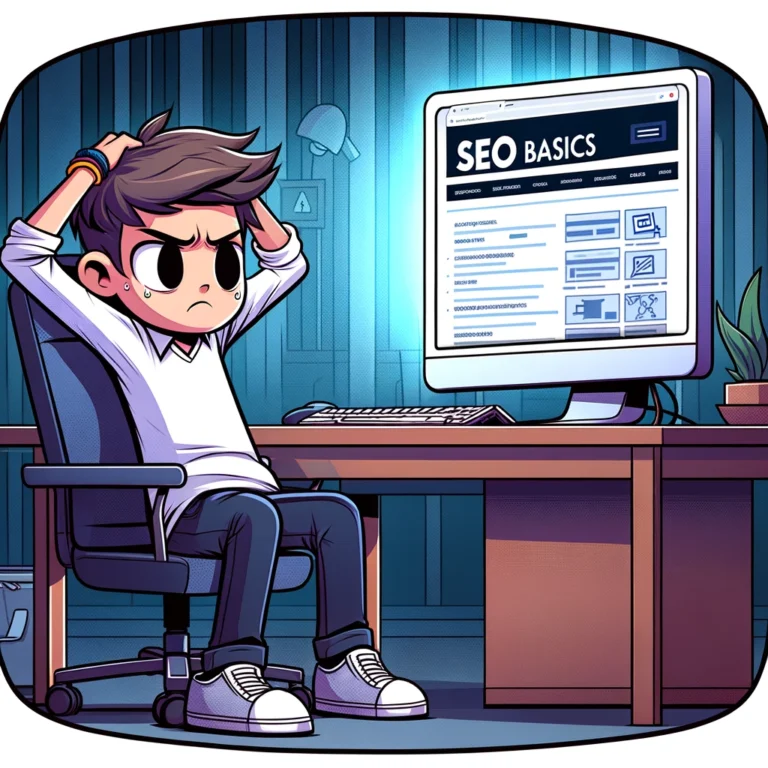Search Engine Optimization (SEO) can seem like a daunting field to beginners, but understanding its basic components is the first step towards mastering it. On-page SEO, specifically, plays a critical role in how search engines understand and rank your website. In this guide, we will explore the various elements of on-page SEO and their importance in a simple, conversational, and authoritative manner.
What is On-Page SEO?
On-page SEO refers to the practice of optimizing web pages to improve a site’s search engine rankings and earn organic traffic. Unlike off-page SEO, which involves external signals like backlinks, on-page SEO deals with aspects of your website that you can control directly.
Title Tags
Title tags are the clickable headlines displayed on search engine results pages (SERPs) and are critical for providing initial context to both users and search engines. An effective title tag should be concise, include main keywords, and convey the content of the page accurately. Remember, Google typically displays the first 50–60 characters of a title tag, so keep your titles within this range to avoid having them cut off.
Meta Descriptions
Although meta descriptions do not directly influence rankings, they are important for click-through rates (CTR). A well-crafted meta description provides a brief summary of the page content and is your opportunity to advertise content to searchers. The optimal length is between 140-160 characters, where you should compellingly describe the page content and include relevant keywords.
Headings and Subheadings
Headings help organize content in a structured manner, making it easier for users to navigate your articles and for search engines to understand what your page is about. Use headings hierarchically: H1 for the main title, H2 for main headings, followed by H3 and H4 for subheadings. This structure helps improve readability and boosts SEO by emphasizing key topics and keywords.
Keyword Optimization
Keywords are terms that users enter into search engines, and incorporating these into your content helps pages rank better for those terms. However, keyword stuffing, or overusing keywords, can penalize your site. Instead, focus on using keywords thoughtfully and sparingly, aiming for a natural integration into your content.
Content Quality
Quality content is the cornerstone of on-page SEO. Search engines favor content that is well-researched, written, and relevant to the intended audience. Content should answer users’ questions, provide unique value, and be updated regularly to remain relevant. The length of your content can also influence its ranking potential, with longer, more detailed content typically performing better.
URL Structure
A clean and concise URL structure can improve user experience and aid in ranking. URLs should be easy to read and include keywords relevant to the page’s content. Avoid long URLs, and use hyphens to separate words.
Image Optimization
Images enhance the user experience but can also contribute to SEO. Use relevant images, and optimize them with descriptive file names and alt text. Alt text helps search engines understand what the image is depicting, which can be crucial for text-based searches.
Mobile Responsiveness
With mobile devices accounting for approximately half of web traffic globally, having a mobile-friendly website is essential. Mobile responsiveness impacts SEO because it affects user experience, influencing bounce rates and other ranking factors.
Page Speed
Page speed is a direct ranking factor for Google. Websites that load faster provide a better user experience. Optimizing image sizes, minifying CSS and JavaScript files, and leveraging browser caching can help improve page speed.
Internal Linking
Internal linking helps search engines discover new pages on your site and understand their context within the broader website structure. Use descriptive anchor text for internal links and link to relevant content that enhances the user’s experience.
Social Sharing Buttons
While social shares are not a direct ranking factor, they can increase visibility and traffic to your content, indirectly benefiting SEO. Including social sharing buttons on your content encourages users to share, increasing the potential for backlinks and higher traffic volumes.
On-page SEO is fundamental for any website aiming to improve its search engine visibility and user experience. By focusing on the elements discussed above, you can create a well-optimized site that attracts more visitors and performs better in SERPs.

Enhancing User Engagement
User engagement metrics such as time on page, pages per session, and bounce rate are indicative of the quality of your website and its content. While not direct ranking factors, these metrics influence overall SEO performance because they provide search engines with data on user satisfaction and relevance.
Content Formatting: To enhance readability and engagement, format your content effectively. Use short paragraphs, bullet points, numbered lists, and bold text to highlight important information. This makes the content more digestible and keeps users on the page longer.
Interactive Elements: Adding interactive elements like quizzes, polls, and videos can significantly increase user engagement. These elements encourage users to spend more time on your site, interact with your content, and visit multiple pages.
Structured Data and Schema Markup
Structured data is a standardized format for providing information about a page and classifying the page content. Schema markup is one form of structured data that you can add to your HTML to improve the way search engines read and represent your page in SERPs.
Benefits: Implementing schema markup can help search engines understand your content better, potentially leading to richer search results through snippets, stars for reviews, or even showing price ranges directly in search results.
Types of Schema: There are many types of schema markups, from articles to local businesses, and implementing the appropriate schema can enhance visibility and click-through rates.
Security: HTTPS
Security is a top priority for users and search engines alike. HTTPS, the secure version of HTTP, encrypts the data exchanged between a user’s browser and your server, protecting against interceptions and attacks.
SEO Impact: Google has confirmed HTTPS as a ranking signal. Websites using HTTPS are preferred and may receive a rankings boost over those that don’t. Ensuring your website is secured not only helps with SEO but also builds trust with your visitors.
Accessibility
Web accessibility means making your website usable for all people, including those with disabilities. This encompasses everything from color contrast and site navigation to using tags that screen readers can interpret.
SEO and Accessibility Overlap: Many practices that improve accessibility also enhance SEO. For example, alt text for images, which assists screen readers for the visually impaired, also helps search engines understand the image content.
The Role of Analytics in SEO
To effectively measure the success of your on-page SEO efforts, you must use web analytics tools like Google Analytics. These tools provide insights into how users interact with your site, which pages they visit, and where they drop off.
Key Metrics: Monitor metrics such as organic search traffic, the average time on page, bounce rate, and conversions to understand how well your SEO strategies are performing and where they might be improved.
Regular Reviews: Regularly review your SEO strategy based on analytics data. This can involve revising your keywords, updating content, or restructuring your site navigation to better align with how users are interacting with your site.
Testing and Optimization
Continuously testing and optimizing your website is vital for maintaining and improving your SEO standing. This includes regularly updating content, testing different keywords, and experimenting with meta titles and descriptions to see what works best.
A/B Testing: Implement A/B testing for different elements of your website to see what changes might improve performance. For example, you might test two different meta descriptions for the same page to see which leads to a higher CTR.
SEO Tools: Leverage SEO tools and platforms, such as Moz, SEMrush, and Ahrefs, which offer a range of functionalities from keyword research and competitive analysis to backlink tracking and content audits.
Conclusion
Mastering on-page SEO is a continual process of learning and adjustment. By focusing on the factors outlined in this guide, you can create a strong foundation for your website’s SEO performance. Remember, the goal of on-page SEO is not just to improve rankings but to enhance the overall user experience, making your site a preferred destination for your target audience.
References
- Google Search Central Blog
- Moz Blog
- Ahrefs Blog
- SEMrush Resources



